Basket cases: The new trend in artisan weaves
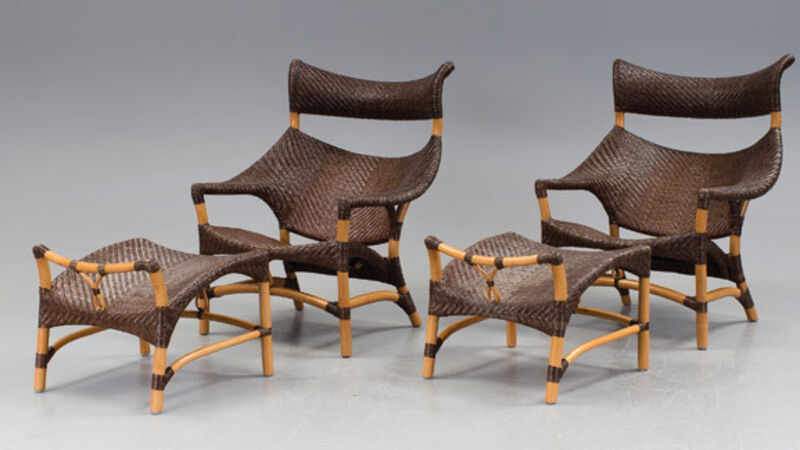
The gentle Artisan trend in interiors has brought new interest and approaches in raw, traditional surfacing from hewn woods to stone, concrete, leather and most markedly this year — weaves in straps, reeds and grasses.
The marketplace is rich with everything from two handled Bolga baskets fashioned from Senegalese Ndiorokh prairie grasses (designed to sit upright or lie on their side) to a deeper appreciation of man-made materials including electrical wiring re-imagined back to ancient forms.
Lighting, shell chairs, screens, vessels and flooring — the textural qualities of weaves softens the status of modern, flat and polished surfaces.
Various indigenous weaves, braids, plaits and knots of countries from Ghana to Chile, add feel, colour and a cultural fascination over the house and have been appropriated by Western designers — the naturally visual globalists — who are rediscovering this trend.
Ireland’s rich basket-making history has survived due to the talents and recognition of a handful of dedicated crafters propagating their working cro, native willow, soaking (a knowledge all of its own) and coppicing their stock season to season, across the country.
Alongside the traditional baskets for everything from fruit to turf, scoibs and nest-like ciseógs (used to strain potatoes), are new free form sculptures in fabulous colours taken straight from the natural colour of the willow.
If you are interested in something sculptural above all, the work of Joe Hogan includes muscular willow and tortured driftwood pouches.
His luminous Catkin bowls (soft puffs of hazel on a willow frame) stand alongside the iconic rattan furniture work of Yamakawa in Japan.
www.joehoganbaskets.com
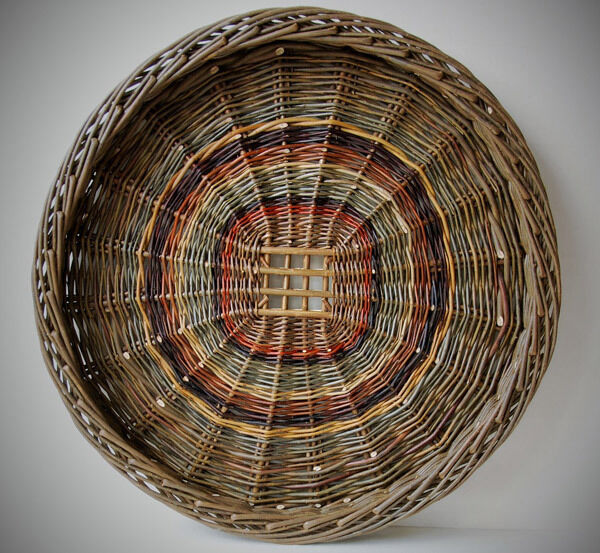
You can create your own baskets this summer with renowned maker Ciaran Hogan, at the Spiddal Craft village, where you can study the willow process from start to finish. A one day course, one-to-one from €120, (other options for groups and longer tutorials are available).
Ciaran’s work is also available to buy, with sciobs fit for the table or the wall from €75, turf baskets from €140, willow bowls from €220 and bread baskets from €60.
www.ciaranhoganbaskets.com
Singling out any one maker is a twisted business, but I do like Kathleen McCormick’s hinged, portable or one-piece garden screens grown, seasoned and made by her hand. They can be moved indoors for winter.
Take a look at her rustic, beautiful bark boxes and commission a trunk or a horticultural basket to your specifications. Kathleen is a textile worker too, and the marriage of basket work to vernacular woven blankets, rugs and hangings is a natural flow.
www.kathleenmccormickbaskets.com (Kildare)
In lamps and shades, take a look at the light raking work of Tipperary artisan, Hanna Van Aeslst.
www.hannavanaelst.com
Countrywide, the DCCOI or The Irish Basket Makers’ Association is a good place to start any search.
www.irishbasketmakers.com
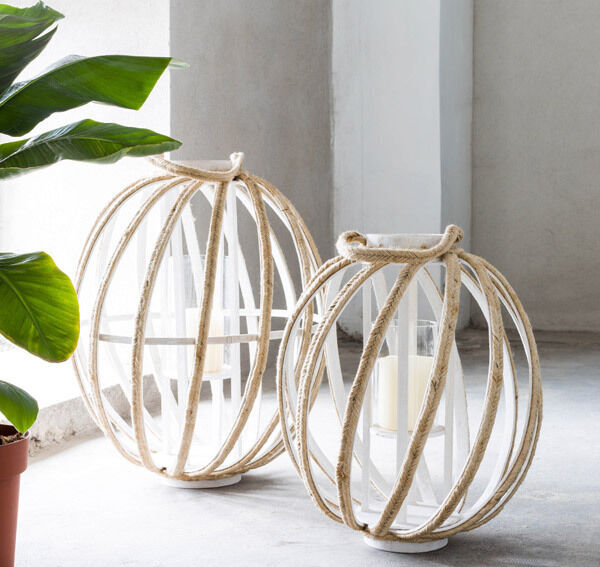
In real or synthetic recycled materials, Fair Trade is one of the respected overseas organisations responsible for delivering thousands of wicker baskets and orbs from places as far flung as Chile, IKEA, long founded in 70s styling — has a strong show of wicker, bamboo strapping and rattan — real and faux at the moment.
Top of my list are IKEA’s floppy, fine weave seagrass Fladis basket in a black/natural combination (€10/€20), and the witty rattan and ash, Gronadal rocker (€175).
Our new indoor/outdoor fascination in furniture has improved the standing of resin copies — take a look at the luxurious Ethimo Esedra dining chairs with deep upholstery – pure WAG wonders, from €1,530 per armchair, www.housology.com
The Zulu craft co-operatives in the urban areas of South Africa are credited with the early recycling of coloured telephone wire, and the technique blending older forms and methods is now vibrant folk art with a 10-year standing.
Look for imbenge (saucers), ukhamba (pods) and isiquabetho (platters) from €50 in indigenous raw ilala palm and Ncebe (banana plant) and wire. Suppliers include www.injabulo.com
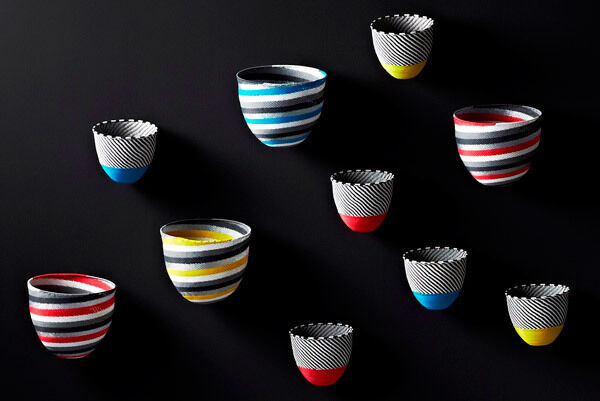
Returning to the real stuff, thuggish, invasive grasses and jointed leaf stems are tamed into gorgeous, affordable products. Under-foot and inexpensive, seagrass is soft enough to spare your soles.
Manufactured from plants grown in coastal meadows along the banks of Vietnamese rivers, as rugs and carpeting, try Casey’s for quality flooring from €35 a metre.
Water Hyacinth is a fast-growing aquatic, nuisance plant native to South America which again delivers a soft surfacing for storage and rattan has never lost its place in humid areas of the home.
We love Helen James’ Kubu baskets in a herringbone weave from just €35, ideal for the bathroom or laundry and fully lined, Dunnes Stores.
With the exception of Irish willow basketry and telephone wire, most plant, reed, twig and wood weaves do not respond well to heavy use and immersion. Start with a good choice of product with a tight, even weave, well secured corners and no obvious shrubbery sticking out that may snag and damage the whole.
Natural grasses and many timbers are dull (not glossy), but colour can vary even across one item. They are notorious dirt magnets, but don’t spray solvent based cleaners.
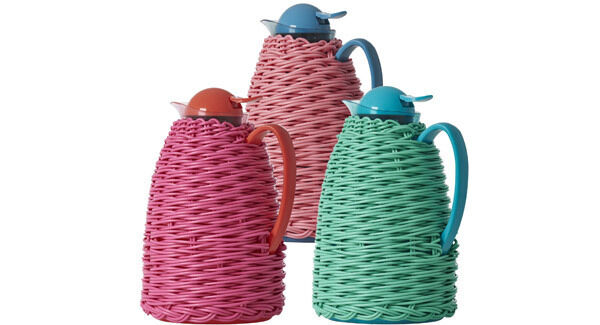
Rattan is a liana used since the late 19th century in the signature ‘Peacock chair’ and has a good even size across its lengths. It’s not intended for outdoors 24/7 — so go phoney.
Wired cores finished with twisted paper make Lloyd loom urprisingly tough and when painted can survive the drizzling onslaught of typical Irish summers. It’s also the darling of the auction room and design studio.
Willow can be completely dunked and many makers recommend tightening the structure of their baskets by occasional long soakings followed by a full and considered drying out.
Regular cleaning with the soft brush attachment of a vacuum cleaner is the best way to treat delicate weaves, lamp-shades and other woven items.











